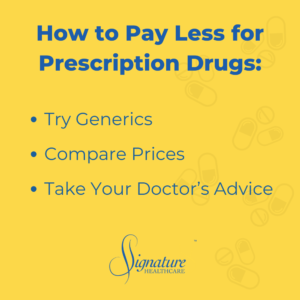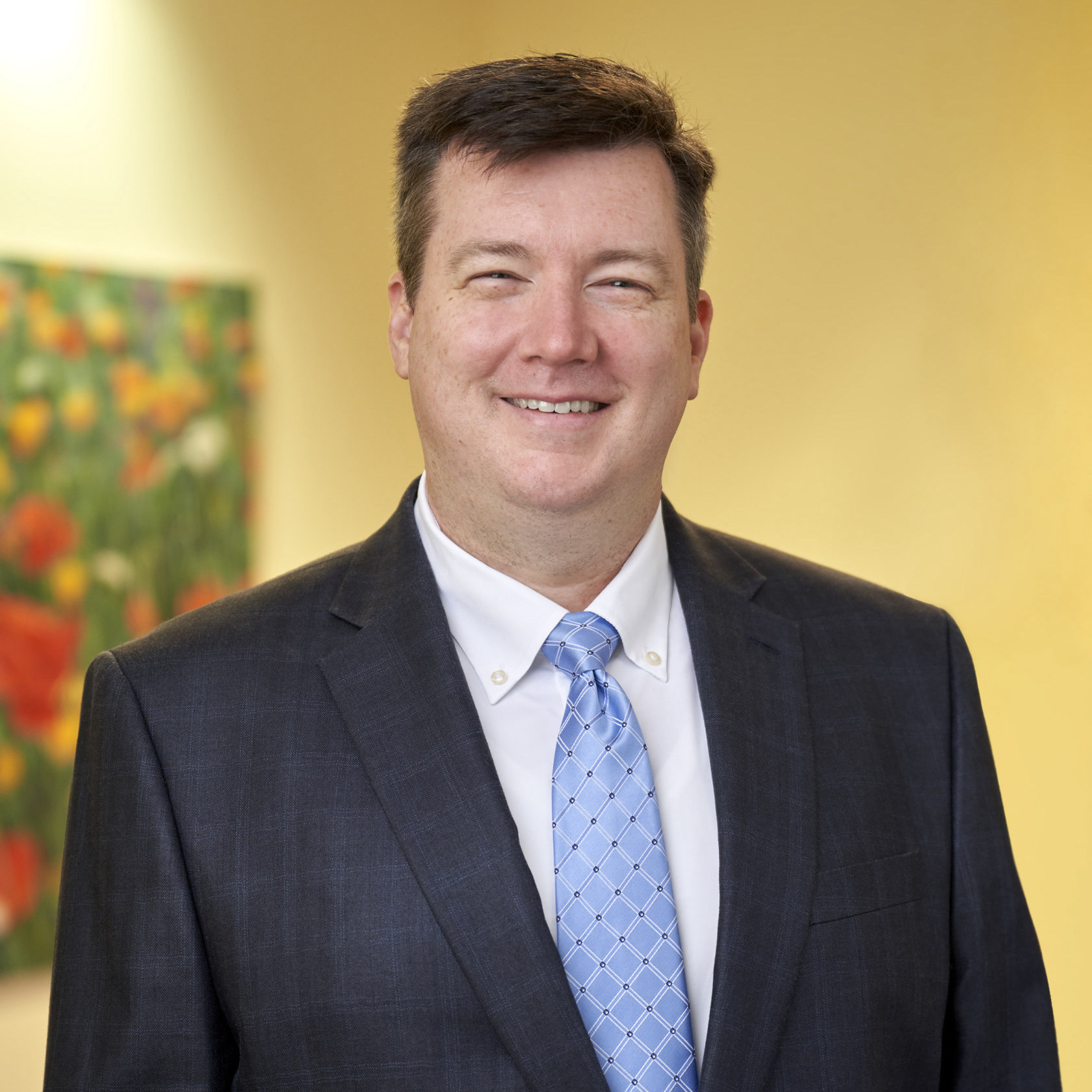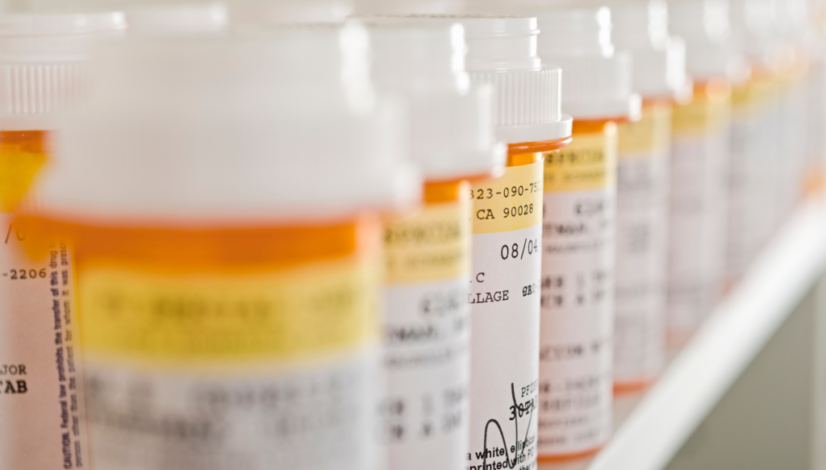How to Pay Less for Prescription Drugs
Pop quiz: Who pays more for prescription medications than anyone else in the world? Unfortunately… you do.
How come the statin medication that treats your cholesterol is cheaper in Europe or Canada than it is here in America, where it was formulated and manufactured? What’s elevating U.S. drug prices? And how do you find out how to pay less for prescription drugs?
Why Americans Pay More
No single factor drives up drug prices for U.S. patients. But here are some complex dynamics that do:
Pharmaceutical companies
Historically, drug development has been costly.
In order to market a medication in the United States, a drug company must complete a series of tests to demonstrate that a drug is safe, and they then must do additional testing to demonstrate that it is effective at treating some clinical disease. A drug company will invest millions of dollars to develop and test a drug, only to have it fail one of these safety or efficacy trials. To recoup those dollars, the company depends on revenue from its more successful medications.
However, recent studies suggest that drug companies often charge American patients more than necessary. For example, as the White House pointed out in early 2024, “U.S. gross prices for insulin — a drug that has been around for 100 years and costs drug companies just $10 a vial to make — were on average almost 10 times the price in the U.S. than in comparison countries.”
U.S. pharmaceutical companies set drug prices for “whatever the market will bear” — that is, what patients in those markets are able to pay, but not necessarily what’s best for them.
Conversely, countries with socialized healthcare — like Canada — refuse to overpay for medications, forcing drug companies to offer them at a lower and more reasonable price there. You may even have friends or family members who order discounted prescription drugs from a Canadian pharmacy.
Closer look: In a famously egregious example of pharmaceutical company greed, drug company Mylan ramped up the price of its EpiPens from $100 to over $600 per pen. EpiPens — lifesaving devices for patients with severe allergic reactions — became so high-priced that people could no longer afford them.
The pens didn’t suddenly involve cutting-edge technology, and there was no shortage of them — and the epinephrine in the pens cost only about $1 per pen to make.
So, why the massive price increase? Mylan simply decided to charge more.
Pharmaceutical companies do need to achieve a strong return on their investments; if they don’t, development breakthroughs will stop. But greed casts the industry in a bad light. Unfair drug price increases must be monitored and discouraged.
Drug patents and the regulatory process
U.S. patent and regulatory processes also drive costs for drug consumers.
When a pharmaceutical company discovers a new medication, they apply for a patent. This patent prevents other manufacturers from copying their process and making a competing medication. These drug patents are valid for 20 years, but the drug company spends most of that time (10–15 years on average) testing the drug and applying for FDA approval. This means that a drug manufacturer has about seven years to sell their drug without competition from generic producers. Other countries do not necessarily observe these patent protections, so generic manufacturers can sell less expensive medications there.
Pharmacy benefit managers (PBMs)
Have you noticed that drug prices often vary from pharmacy to pharmacy, or even from patient to patient?
We can thank pharmacy benefit managers (PBMs) for this shifting landscape. PBMs represent large groups of patients and negotiate with pharmacies to establish prices for certain drugs.
- If your insurer’s PBM doesn’t negotiate a reasonable price on a drug you need, you’ll very likely pay more for it than other patients do.
- PBMs’ many bureaucratic costs drive up drug prices, too.
In addition, many insurance companies now cover a lower percentage of medication costs, forcing patients to pay more and more out of pocket.
Medication shortages
In recent years, certain medications have been pulled from the market due to contamination and other safety concerns. Inevitably, a shortage ramps up the price for that medication — and for similar ones — as patients scramble for alternatives.
And unfortunately, even when shortages abate, many drug prices remain elevated.

How to Pay Less for Prescription Drugs: Try Generics
Generic medications can be an excellent option for cost-conscious patients. A generic drug is manufactured to perform like a similar brand-name drug in strength, dosage, efficacy, quality, and safety.
Cost
When the patent on a brand-name medication expires in the U.S., other manufacturers are free to develop a generic version of that drug. Not faced with the R&D costs of the initial manufacturer, they can simply reproduce the chemical formula and market it more cheaply than the original drug.
Consider these eye-opening cost differentials between original brand-name drugs and their generic rivals:
- Cholesterol: When brand-name Crestor was first introduced in 2007, a prescription cost about $66 per month. Today, the generic version (rosuvastatin) is generally under $10 a month.
- Erectile dysfunction: Tadalafil, sold under the brand name Cialis, originally cost between $16 and $17 for a single pill. Today, a patient can obtain 30 pills of generic tadalafil for about the same price.
Efficacy
Because most generic medications are manufactured via the same rigorous process as their brand-name counterparts, they’re just as safe and effective. However, occasionally, I may steer a patient away from generics.
For instance, people with hypothyroidism must take a supplemental hormone, present in a small amount in each dose of the generic thyroid medication levothyroxine. From month to month, pharmacies might obtain their generics from different manufacturers, and the tiny amount of hormone in a levothyroxine tablet may fluctuate slightly from manufacturer to manufacturer.
So, a patient who takes Manufacturer A’s generic for one month, then Manufacturer B’s, and then Manufacturer C’s may receive a varying dose over time without realizing it. They could have corresponding variations in their hypothyroid symptoms that lead us to needlessly adjust their levothyroxine dose. I consequently encourage patients with hypothyroidism toward one of many name brands so that they receive a consistent amount of hormone in each tablet, month after month.
A Word About Insurance
Because insurance companies represent large patient populations, they play a significant role in certain drugs’ affordability.
Always interested in negotiating lower prices, a large insurer has the power to approach drug companies and ask for a price break on particular medication. In this way, the insurance company gradually builds up a drug formulary, a list of approved medications it will cover for its patients.
However, these formularies often are not publicly available, so I rarely know what medications your insurance company will approve. Some patients may receive a copy of their insurer’s formulary, but many do not. To complicate things further, different plans from the same insurance company often have different medications permitted on their formulary. We physicians must often prescribe the medication we would prefer and see if the insurer approves it or requests an alternative. Insurers often require that patients try inexpensive generic options before they will approve a name brand.
One great example is with some new migraine headache medications called CGRP inhibitors. These medications work really well at stopping migraines for many patients. However, most insurers prefer that a migraine patient first try well-established, lower-cost triptan medications. If these aren’t effective or cause excessive side effects, then we can sometimes get the newer medications approved.
If an insurer continues to refuse the request, we can conduct peer-to-peer calls with the insurer’s medical staff to justify our patient’s need. In concierge medicine, we have a smaller patient panel, so we’re better able to arrange these conversations than an overburdened traditional primary care practice may be.

How to Pay Less for Prescription Drugs: Compare Prices
A great way to cut prescription costs is by using a helpful price-comparison platform like GoodRx.
I keep my GoodRx browser tab open so I can give patients economical options or let them know I’ve sent their prescription to the lowest-cost source. Occasionally, I’m shocked by what I find.
For example, during the worst of the COVID pandemic, a supply of Paxlovid cost about $200 for a five-day course of treatment under standard insurance coverage. But by price-checking recently on GoodRx, I found it’s increased to $1,400–1,500 for a five-day supply!
I’ve also seen dramatic price differences between pharmacies. A gel I prescribe to treat low testosterone costs $300–400 or more at some pharmacies but as little as $18 at others.
My advice: Check GoodRx when you’re beginning a new medication or if you’re taking a medication with a high out-of-pocket cost. The savings definitely add up. If the cash price of the medication is less expensive than your out-of-pocket co-pay, choose to pay cash.
A Word About Compounding Pharmacies
Your local compounding pharmacy may be a good choice if you need a more obscure medication or a particular formulation not typically available.
If you can’t swallow pills, a compounding pharmacy may provide your medications in liquid form. Or, a specialist may prescribe a medication that requires compounding — for example, topical minoxidil to promote hair growth may need to be specially formulated for better absorption into the scalp.
However, a word of caution about online and overseas compounding pharmacies: Their products may not be as well-regulated as quality-controlled, commercially made products.
Take the following examples:
- I’ve seen patients order hormone replacement therapy — for example, topical estrogen — online without first consulting a doctor to discuss their needs and potential risks. The compounded formula some of my patients have received contained ingredients that weren’t FDA-approved and seemed better suited for veterinary use.Compounded products may have quality control issues, too. For instance, the active drug in a compounded cream may not be evenly distributed, or it may separate. That could mean getting less of the drug when you’re at the top of the jar and too much when you are at the bottom.
- Many compounding pharmacies are offering GLP-1 weight-loss products based on semaglutide (the generic name for Wegovy and Ozempic).Because semaglutide is currently in short supply, the FDA is allowing compounding pharmacies to temporarily fill prescriptions for it. Although these pharmacies are supposedly sourcing their semaglutide from FDA-approved labs, I don’t think anyone is verifying this. This semaglutide arrives in a different chemical form — the salt form — than the brand name. Compounding pharmacies may also add other ingredients that they think will be helpful but might cause you side effects or drug reactions.
How to Pay Less for Prescription Drugs: Take Your Doctor’s Advice
It’s natural to question medication expenses that seem out-of-line or to wonder if the health benefit is worth the cost.
If you’re surprised or baffled by the cost of a prescription, share your concerns with us. We typically prescribe medicines expecting insurance to cover them; if not, we can often find less costly, equally viable alternatives.
Recently, I prescribed doxycycline for a patient. Their pharmacy tried to provide them with doxycycline hyclate rather than doxycycline monohydrate. They’re essentially the same antibiotic, but hyclate costs hundreds of dollars, compared to $10 for monohydrate.
When the patient contacted me, I directed the pharmacy toward the right product, which saved the patient a lot of money.
Before you fill a prescription
So, how to pay less for prescription drugs? Follow this advice before you fill a prescription:
- Consider calling your pharmacy before filling a new medication to see what the prescription will cost. Look the medication up on GoodRx.com and see if other pharmacies offer it at a lower cost. If it sounds excessive, let me know.
- See if your insurance company partners with a preferred mail-order pharmacy. A mail-order option typically offers your regular-use medicines at a much lower cost and will ship to you regularly.
- Check drug company websites to see if they offer patient assistance, discounts, or coupons for your medication. Pharmas will often discount a medication your insurer won’t cover. For example, Eli Lilly — the manufacturer of Zepbound, a leading weight-loss medication — offers a discount to patients who must pay out of pocket, reducing their monthly cost from $1,000 to about $550.
- Specialty pharmacies that partner with major drug companies can offer certain medicines at a much lower price. For example, when the iron supplement ACCRUFeR was introduced, many insurers didn’t cover it, despite the fact that it had fewer side effects than other supplements. So its manufacturer partnered with a specialty pharmacy that made it available for about $25 for a 30-day supply, compared with the hundreds of dollars charged by big-box pharmacies.
Let’s Cut Costs for Medication
Wondering how to pay less for prescription drugs? Concerned you won’t be able to obtain a particular medication?
Your Signature Healthcare team is here to help. We can find an effective medication that suits your budget, explore other alternatives with providers, or discuss your case directly with your insurance provider.
Reach out with questions. We have answers.

Dr. David Yancey
Dr. Yancey, a board-certified internal medicine specialist, hails from Winston-Salem and holds a psychology degree from Davidson College. He furthered his medical education at The Brody School of Medicine at East Carolina and completed his internal medicine residency at the prestigious Mayo Clinic. Returning to North Carolina in 2010, Dr. Yancey has since been a dedicated hospitalist physician at Carolinas Medical Center in Charlotte. There, he has spearheaded various multi-disciplinary rounding programs and contributed to the training of PA and nurse practitioner fellows.
Outside of his professional pursuits, Dr. Yancey is an avid enthusiast of the great outdoors, enjoying trail running and hiking with his dog. He also relishes traveling, cooking, and assembling jigsaw puzzles with his family.
Get the latest News
Join the Signature Healthcare Newsletter to get the latest articles, resources, and news delivered directly to your inbox.

